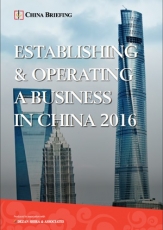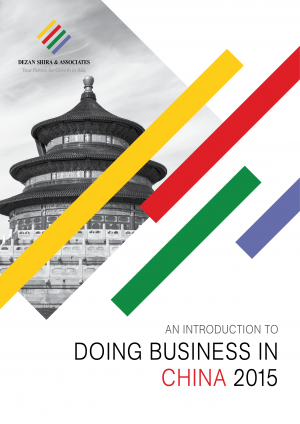Making Sense of China’s ‘One Belt, One Road’: Understanding Chinese Views
By Kerry Brown and He Jingjing
One of the challenges of trying to make sense of the ‘One Belt, One Road’ strategy (OBOR, in Chinese `yi dai yi lu’一带一路) has been to work out what the idea is trying to express in the first place, at least as it is understood within China. In March 2015, the State Council issued an action plan, in which it stated that the idea was principally aimed at encouraging:
The orderly and free flow of economic factors, highly efficient allocation of resources and deep integration of markets; encouraging the countries along the Belt and Road to achieve economic policy coordination and carry out broader and more in-depth regional cooperation of higher standards; and jointly creating an open, inclusive and balanced regional economic cooperation architecture that benefits all.
This sounds reasonable enough. The action plan makes clear too that China is seeking to work within existing international systems, not outside of them. So it embraces standards and norms from the UN and from other multilateral partners. But when we get down to specifics, the question of how China sees its main objectives and intentions becomes harder to answer. There is the proposal to have more RMB denominated bonds available for governments covered by the OBOR region, and also to have more scholarships, greater freedom of people movement, and more connectivity. It also proposes co-operation Memorandum of Understandings, and the hosting of international fora to embed the idea of greater regional identity. But what do Chinese leaders and thinkers see the main objectives of OBOR being? What do they want to achieve through it?
Part of the challenge of working out OBOR’s impact is to acknowledge that it is a hybrid and complex idea that combines philosophical and economic elements within Chinese discourse. One principle aim of OBOR strategy will simply be in helping to think about the world in a different way. OBOR clearly does have a geopolitical narrative, attempting to promote the idea of a more inclusive global governance regime where both developing and developed countries are being invited to work together with greater parity. Due to a variety of reasons, China regards the existing global governance structure as characterized by huge gaps between the North and the South, and between inland and maritime nations. There are many others who share this view. It feels there is an urgent need to rebalance and reorder this. China’s appeal to most of the potential partners along the belt and the road is that this idea will help them to gain benefits which the existing global political and economic order currently does not supply by creating new opportunities and innovative platforms. In the words of Chinese foreign minister Wang Yi, “the initiative is China’s idea, but the opportunities it has created belong to the world”. In this context, therefore, it is China’s own contribution to geopolitical thinking. It is the attempt by the world’s second largest economy to have a stronger voice in the global economic order.
![]() RELATED: Business Advisory Services from Dezan Shira & Associates
RELATED: Business Advisory Services from Dezan Shira & Associates
Another of OBOR’s strategic aims is not just to establish “hard” connectivity – infrastructure development, especially transport construction – but also to build “soft” connectivity, including promotion of trade, financial integration, exchange of policy and culture as well as people-to-people links – to forge, as it were, a stronger regional consciousness. This hard and soft connectivity aims to boost economic recovery and stability in the OBOR area and those around it. China wants OBOR to promote what it understands as its philosophy of multilateral collaboration largely centered on the UN Five Principles of Peaceful Coexistence. In that sense, OBOR is also a gambit by China to have greater global understanding of its diplomatic position and its ability to contribute beyond its borders to the resolution of global problems.
A final OBOR objective is more tangible: to help to meet Asia’s urgent need for infrastructure investment. According to one estimate put out by PriceWaterhouseCooper (PWC), Asia is in need of at least US$5 trillion over the next five years for infrastructure development, the lack of which is already holding back the region’s economic development. OBOR’s infrastructure investment programs are therefore angled at creating new channels of trade and development for the under-developed nations in Asia’s hinterlands, which are to a great extent isolated from the global economy due to poor connectivity to the world’s major economic hubs. This is a natural enough area for China to have an interest in, as these are all potential markets and investment partners, but ones that need assistance to become more viable.
If the OBOR strategy works with its combination of philosophical and economic ingredients, then new economic centers could appear along the OBOR economic corridor, changing the world’s landscape profoundly. Part of the strategy here is to stimulate trade by lowering trade barriers, reducing trade costs, and facilitating the flow of information, goods and people along the route. A second strategic aim is to strengthen financial integration within the region through enhanced cross-border financial exchanges, the building of currency stability, financial rating and risk management systems, as well as the establishment of financial institutions.
So OBOR’s benefits, as they are conceptualized in Beijing, do clearly go beyond the purely economic realm. The idea is a hybrid one, and needs to be divided into different parts, some of them about ideas, the others about tangible investment and trade flow issues. If this complex idea is well implemented, it will mean that the world has another source of ideas and potential innovations, and new ways of cooperating with China. OBOR at the very least brings the possibility of an alternative model of partnership, and new means of cooperating for a common goal. Therein lies its significance.
Kerry Brown is Director of the Lau China Institute and Professor of Chinese Politics at King’s College, London. He Jingjing is Assistant Professor in International and Domestic Environmental Law, Department of the International Economic Law, Institute of the International Law, and The Chinese Academy of Social Sciences.
|
Asia Briefing Ltd. is a subsidiary of Dezan Shira & Associates. Dezan Shira is a specialist foreign direct investment practice, providing corporate establishment, business advisory, tax advisory and compliance, accounting, payroll, due diligence and financial review services to multinationals investing in China, Hong Kong, India, Vietnam, Singapore and the rest of ASEAN. For further information, please email china@dezshira.com or visit www.dezshira.com. Stay up to date with the latest business and investment trends in Asia by subscribing to our complimentary update service featuring news, commentary and regulatory insight. |

 Establishing & Operating a Business in China 2016
Establishing & Operating a Business in China 2016
Establishing & Operating a Business in China 2016, produced in collaboration with the experts at Dezan Shira & Associates, explores the establishment procedures and related considerations of the Representative Office (RO), and two types of Limited Liability Companies: the Wholly Foreign-owned Enterprise (WFOE) and the Sino-foreign Joint Venture (JV). The guide also includes issues specific to Hong Kong and Singapore holding companies, and details how foreign investors can close a foreign-invested enterprise smoothly in China.
 An Introduction to Doing Business in China 2015
An Introduction to Doing Business in China 2015
Doing Business in China 2015 is designed to introduce the fundamentals of investing in China. Compiled by the professionals at Dezan Shira & Associates, this comprehensive guide is ideal not only for businesses looking to enter the Chinese market, but also for companies that already have a presence here and want to keep up-to-date with the most recent and relevant policy changes.
 China’s New Economic Silk Road: The Great Eurasian Game & The String of Pearls
China’s New Economic Silk Road: The Great Eurasian Game & The String of Pearls
This unique and currently only available study into the proposed Silk Road Economic Belt examines the institutional, financial and infrastructure projects that are currently underway and in the planning stage across the entire region. Covering over 60 countries, this book explores the regional reforms, potential problems, opportunities and longer term impact that the Silk Road will have upon Asia, Africa, the Middle East, Europe and the United States.
- Previous Article How IT is Changing Payroll Processing and HR Admin in China – New Issue of China Briefing Magazine
- Next Article Labor Case Study: Social Insurance Contribution in China









